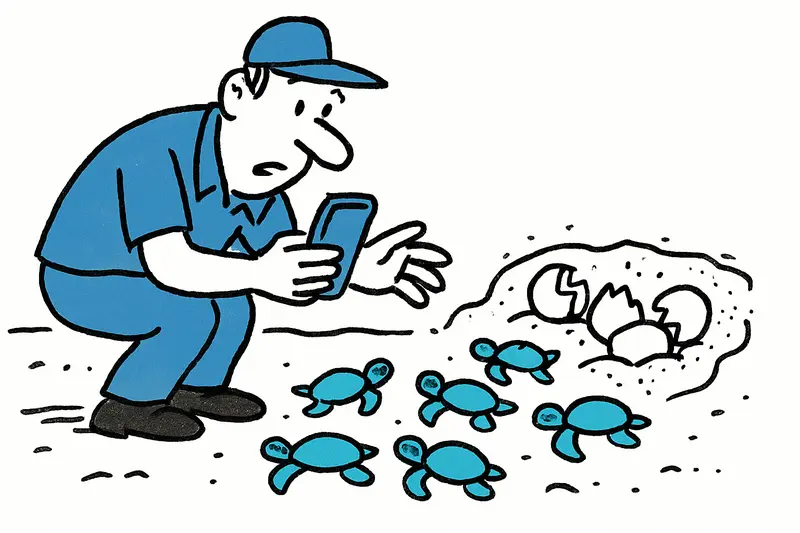Early in the morning at Cala Calderer on Menorca, 25 live hatchlings were found. Volunteers and conservationists are now caring for their rearing before the animals are allowed back into the sea.
Third sea turtle nest of the season discovered at Cala Calderer on Menorca
Early risers at Cala Calderer on Menorca were not surprised: staff of a nearby hotel discovered tracks of freshly hatched turtles in the morning and alerted authorities. On site, wildlife protectors eventually found the nest – with 25 living hatchlings, four still unhatched eggs and numerous empty eggshells.
The find was no accident but the result of an observant guest and two hotel employees who were on a routine beach check around 7 a.m. "The sand band looked unusual," says a helper who has worked in this section for years. Soon after, experts arrived and secured the little animals.
What exactly was found? The young turtles had probably left the nest during the night and were trying to crawl into the sea. In some places only fine tracks in the sand were visible. The helpers documented the situation, collected the surviving hatchlings, and secured the still-intact eggs.
Since Menorca does not have the capacity for long-term care, the animals were taken to Mallorca. There they are to be cared for in a professional rearing program until they are large and strong enough to head out to sea. Such programs greatly increase survival chances – especially in times when artificial lighting, beach usage and dogs can disturb the little ones.
The discovery is good news: it is only the third documented nest of the season on the Balearic Islands. Conservationists see hope, but also caution. Especially in the coming weeks, they ask residents and visitors for simple considerations: turn off lights on the beach, avoid litter, and keep dogs on a leash.
A few practical tips: If you discover a possible nesting site, please inform the local conservation authority or beach patrol, photograph from a distance and do not disturb the animals. Any inadvertent disturbance can hinder hatching.
In the end a warm feeling remains: 25 small beings have had a chance because people were attentive. Whether and when the animals will be released again will be decided by the rearing center – usually when they are robust enough and the season for release fits. Until then, the work of the volunteers and experts remains essential.
Similar News

Severe Weather in Mallorca: Ongoing Delays at Palma Airport Cause Frustration
Due to heavy rain and thunderstorms, there are still significant delays at Palma Airport. Travelers from Germany should ...

Northern Lights over Mallorca: When and Where You Can See the Aurora Borealis
Between October 20 and 29, the Northern Lights could be visible over Mallorca. Who wouldn’t want to go to Scandinavia? A...

Costitx: Flowers, Stones, and a Look at the Starry Sky
Small village, big personality: Costitx blends blooming streets, ancient excavations, and an observatory - a day-trip ti...

Die Zeit auf Mallorca: Warum die Uhren hier anders ticken
Auf Mallorca läuft die Uhr offiziell anders als die Sonne — ein Erbe aus den 1940er-Jahren, das bis heute unseren Alltag...

Orange Weather Warning for Mallorca: Heavy Rain and Thunderstorms Set the Week
Aemet warns: Monday and Tuesday on Mallorca are under orange alert. Heavy rain, floods, and traffic disruptions are poss...
